Lattice Boltzmann Simulation of Spatial Fractional Convection–Diffusion Equation
Abstract
:1. Introduction
2. Lattice Boltzmann Model
2.1. Lattice Boltzmann Equation
2.2. Recovery of the Macroscopic Equation
3. Numerical Example
4. Conclusions
Author Contributions
Funding
Institutional Review Board Statement
Data Availability Statement
Conflicts of Interest
References
- Atangana, A.; Qureshi, S. Modeling attractors of chaotic dynamical systems with fractal-fractional operators. Chaos Solitons Fractals 2019, 123, 320–337. [Google Scholar] [CrossRef]
- Ullah, S.; Khan, M.A.; Farooq, M.; Alzahrani, E.O. A fractional model for the dynamics of tuberculosis (TB) using Atangana-Baleanu derivative. Discret. Contin. Dyn. Syst.-Ser. S 2020, 13, 937–956. [Google Scholar] [CrossRef]
- Owolabi, K.M. Mathematical analysis and numerical simulation of a fractional reaction-diffusion system with Holling-type III functional response. Int. J. Math. Model. Numer. Optim. 2019, 9, 196–219. [Google Scholar] [CrossRef]
- Feng, X.; Zhao, L. The Backward Problem of Stochastic Convection–Diffusion Equation. Bull. Malays. Math. Sci. Soc. 2022, 45, 3535–3560. [Google Scholar] [CrossRef]
- Chen, M.; Tian, Y.; Yang, W.; Chen, X. Mixed Convection of Fractional Nanofluids Considering Brownian Motion and Thermophoresis. Fractal. Fract. 2022, 6, 584. [Google Scholar] [CrossRef]
- Zureigat, H.; Al-Smadi, M.; Al-Khateeb, A.; Al-Omari, S.; Alhazmi, S.E. Fourth-Order Numerical Solutions for a Fuzzy Time-Fractional Convection–Diffusion Equation under Caputo Generalized Hukuhara Derivative. Fractal. Fract. 2022, 7, 47. [Google Scholar] [CrossRef]
- Zhao, L.; Feng, X. The Inverse Source Problem for a Class of Stochastic Convection-Diffusion Equations. Appl. Math. Mech. 2022, 43, 1392–1401. [Google Scholar]
- Basha, M.; Anley, E.; Dai, B. Linearized Crank–Nicolson Scheme for the Two-Dimensional Nonlinear Riesz Space-Fractional Convection–Diffusion Equation. Fractal. Fract. 2023, 7, 240. [Google Scholar] [CrossRef]
- Anley, E.; Basha, M.; Hussain, A.; Dai, B. Numerical simulation for nonlinear space-fractional reaction convection-diffusion equation with its application. Alex. Eng. J. 2023, 65, 245–261. [Google Scholar] [CrossRef]
- Fu, T.; Duan, B.; Zheng, Z. An Effective Finite Element Method with Singularity Reconstruction for Fractional Convection-Diffusion Equation. J. Sci. Comput. 2021, 88, 59. [Google Scholar] [CrossRef]
- Hamid, M.; Usman, M.; Tian, Z. Computational analysis for fractional characterization of coupled convection-diffusion equations arising in MHD flows. Appl. Math. Mech. 2023, 44, 669–692. [Google Scholar] [CrossRef]
- Amin, A.; Abdelkawy, M.; Hashim, I. A space-time spectral approximation for solving nonlinear variable-order fractional convection-diffusion equations with nonsmooth solution. Int. J. Mod. Phys. C 2023, 34, 2350041. [Google Scholar] [CrossRef]
- Qian, Y.; d’Humieres, D.; Lallemand, P. Lattice BGK models for Navier–Stokes equations. Europhys. Lett. 1992, 17, 479–484. [Google Scholar] [CrossRef]
- Chen, S.; Doolen, G. Lattice Boltzmann method for fluid flows. Annu. Rev. Fluid Mech. 1998, 30, 329–364. [Google Scholar] [CrossRef]
- Succi, S.; Benzi, R. Lattice Boltzmann equation for quantum mechanics. Phys. D 1993, 69, 327–332. [Google Scholar] [CrossRef]
- Chai, Z.; Shi, B. A novel lattice Boltzmann model for the Poisson equation. Appl. Math. Model. 2008, 32, 2050–2058. [Google Scholar] [CrossRef]
- Lai, H.; Ma, C. Numerical study of the nonlinear combined Sine-Cosine-Gordon equation with the lattice Boltzmann method. J. Sci. Comput. 2012, 53, 569–585. [Google Scholar] [CrossRef]
- Gan, Y.; Xu, A.; Zhang, G.; Succi, S. Discrete Boltzmann modeling of multiphase flows: Hydrodynamic and thermodynamic non-equilibrium effects. Soft Matter 2015, 11, 5336. [Google Scholar] [CrossRef]
- Gan, Y.; Xu, A.; Zhang, G.; Zhang, Y.; Succi, S. Discrete Boltzmann trans-scale modeling of high-speed compressible flows. Phys. Rev. E 2018, 97, 053312. [Google Scholar] [CrossRef]
- Gan, Y.; Xu, A.; Zhang, G.; Lin, C.; Lai, H.; Liu, Z. Nonequilibrium and morphological characterizations of Kelvin-Helmholtz instability in compressible flows. Front. Phys. 2019, 14, 43602. [Google Scholar] [CrossRef]
- Gan, Y.; Xu, A.; Lai, H.; Li, W.; Sun, G.; Succi, S. Discrete Boltzmann multi-scale modelling of non-equilibrium multiphase flows. J. Fluid Mech. 2022, 951, A8. [Google Scholar] [CrossRef]
- Sun, G.; Gan, Y.; Xu, A.; Shi, Q. Droplet coalescence kinetics: Thermodynamic nonequilibrium effects and entropy production mechanism. Phys. Fluids 2024, 36, 032109. [Google Scholar] [CrossRef]
- Wang, H. Numerical simulation for solitary wave of Klein–Gordon–Zakharov equation based on the lattice Boltzmann model. Comput. Math. Appl. 2019, 78, 3941–3955. [Google Scholar] [CrossRef]
- Wang, H. Numerical simulation for (3+1) D solitary wave of extended Zakharov–Kuznetsov equation in dusty plasma based on lattice Boltzmann method. Phys. Lett. A 2020, 384, 126809. [Google Scholar] [CrossRef]
- Wang, H. Lattice Boltzmann model for (2+1)-dimensional solitary and periodic waves of the Calogero-Bogoyavlenskii-Schiff equation. East Asian J. Appl. Math. 2021, 11, 580–593. [Google Scholar] [CrossRef]
- Wang, H.; Liu, Y.; Li, X.; Chen, H. Numerical simulation for solitary waves of the generalized Zakharov equation based on the lattice Boltzmann method. Mathematics 2024, 12, 967. [Google Scholar] [CrossRef]
- Amiri Delouei, A.; Nazari, M.; Kayhani, M.H.; Succi, S. Immersed Boundary—Thermal Lattice Boltzmann Methods for Non-Newtonian Flows Over a Heated Cylinder: A Comparative Study. Commun. Comput. Phys. 2015, 18, 489–515. [Google Scholar] [CrossRef]
- Wang, Y.; Du, R.; Chai, Z. Lattice Boltzmann model for time-fractional nonlinear wave equations. Adv. Appl. Math. Mech. 2022, 14, 914–935. [Google Scholar] [CrossRef]
- Du, R.; Liu, Z. A lattice Boltzmann model for the fractional advection–diffusion equation coupled with incompressible Navier–Stokes equation. Appl. Math. Lett. 2020, 101, 106074. [Google Scholar] [CrossRef]
- Liang, H.; Zhang, C.; Du, R.; Wei, Y. Lattice Boltzmann method for fractional Cahn-Hilliard equation. Commun. Nonlinear Sci. Numer. Simul. 2020, 91, 105443. [Google Scholar] [CrossRef]
- Xia, Y.; Wu, J.; Zhang, Y. Lattice-Boltzmann simulation of two-dimensional super-diffusion. Eng. Appl. Comput. Fluid Mech. 2012, 6, 581–594. [Google Scholar] [CrossRef]
- Zhou, J.; Haygarth, P.; Withers, P.; Macleod, C.; Falloon, P. Lattice Boltzmann method for fractional advection-diffusion equation. Phys. Rev. E 2016, 93, 043310. [Google Scholar] [CrossRef] [PubMed]
- Chapman, S.; Cowling, T.G. The Mathematical Theory of Non-Uniform Gases; Cambridge University Press: Cambridge, UK, 1970. [Google Scholar]
- Wang, H. A lattice Boltzmann model for the ion- and electron-acoustic solitary waves in beam-plasma system. Appl. Math. Comput. 2016, 279, 62–75. [Google Scholar] [CrossRef]
- Zheng, D. Fractional Partial Differential Equation’s Numerical Solution and Fundamental Solution. Master’s Thesis, Fuzhou University, Fuzhou, China, 2005. [Google Scholar]
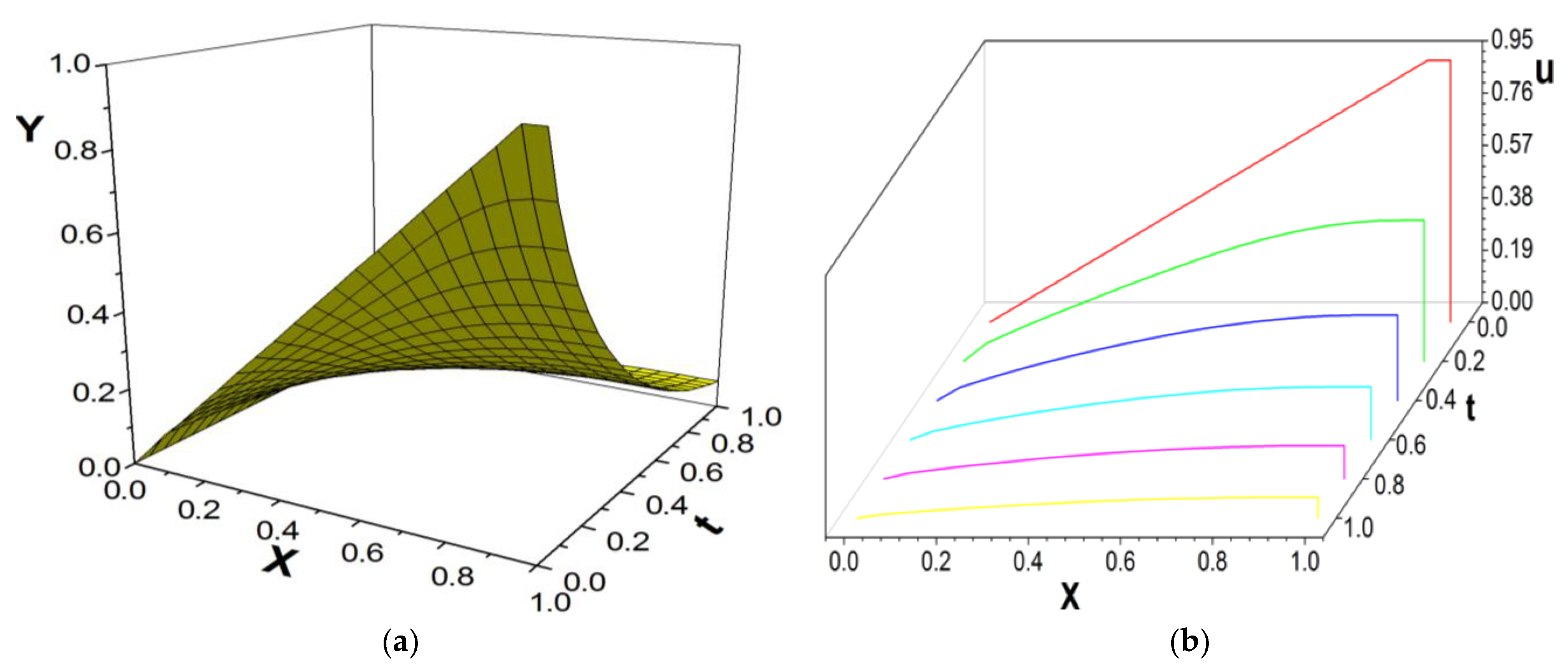
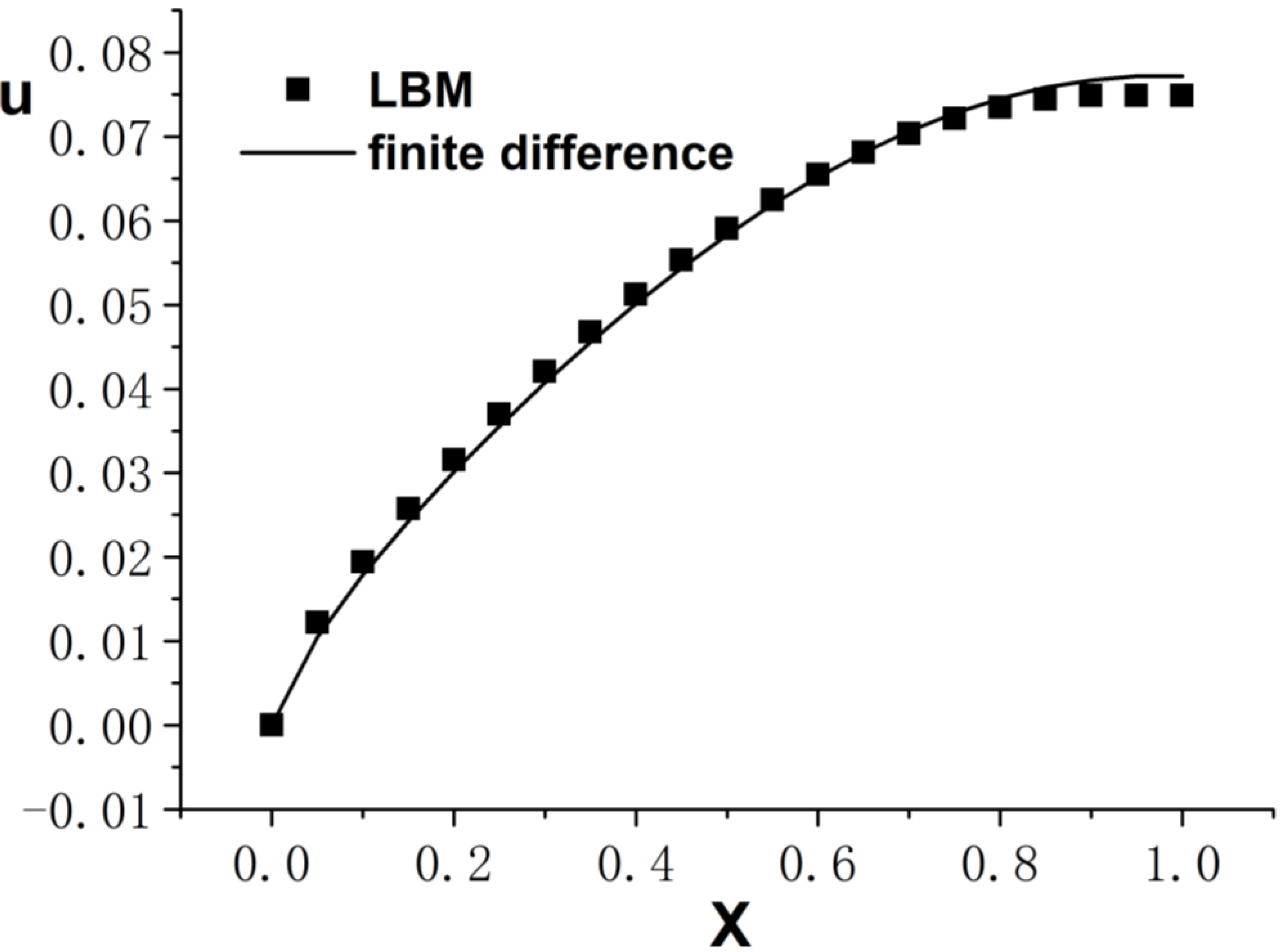

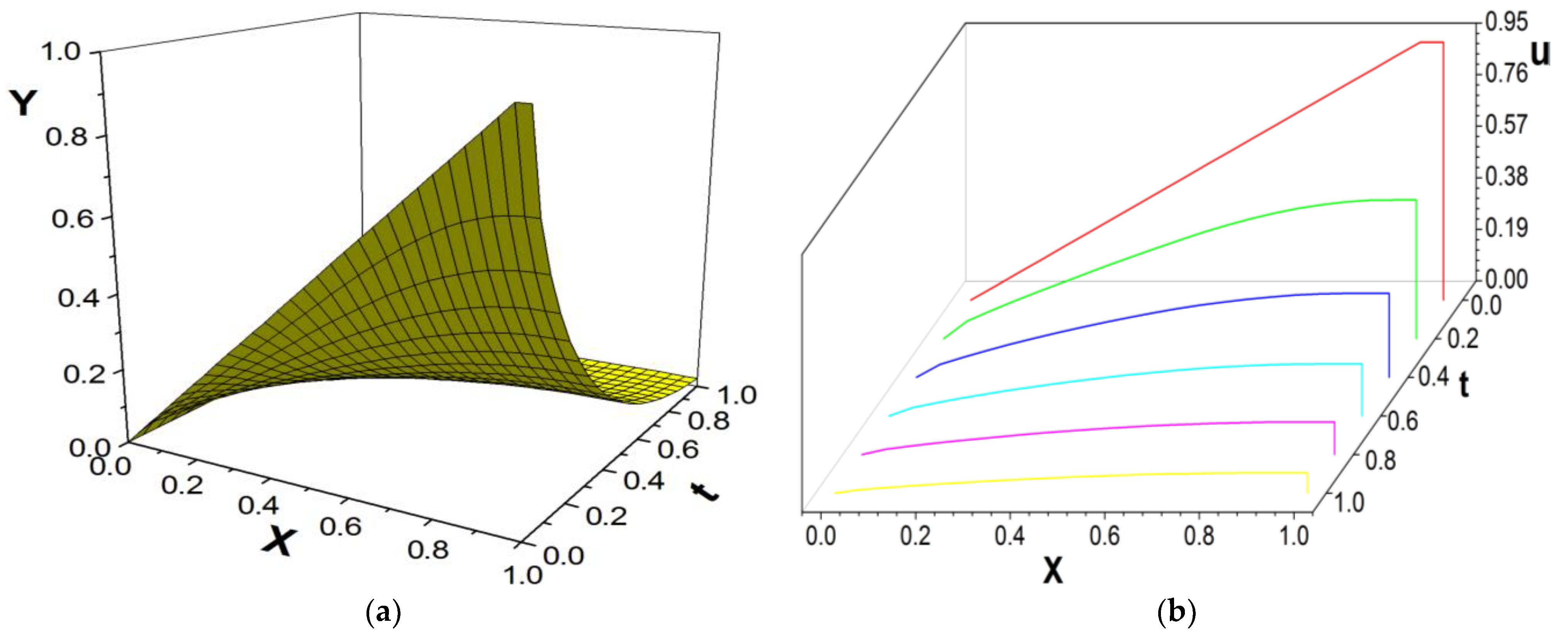
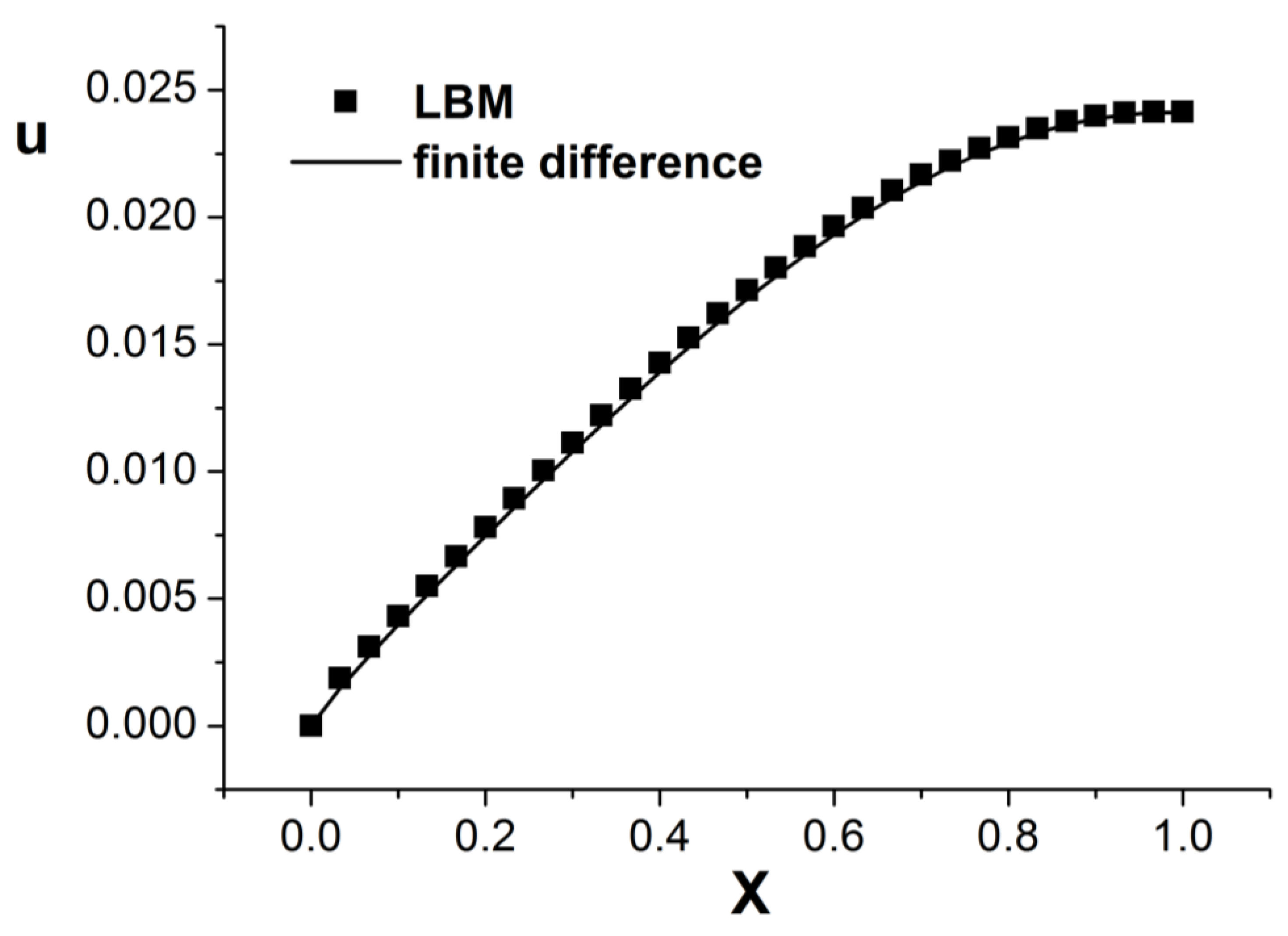
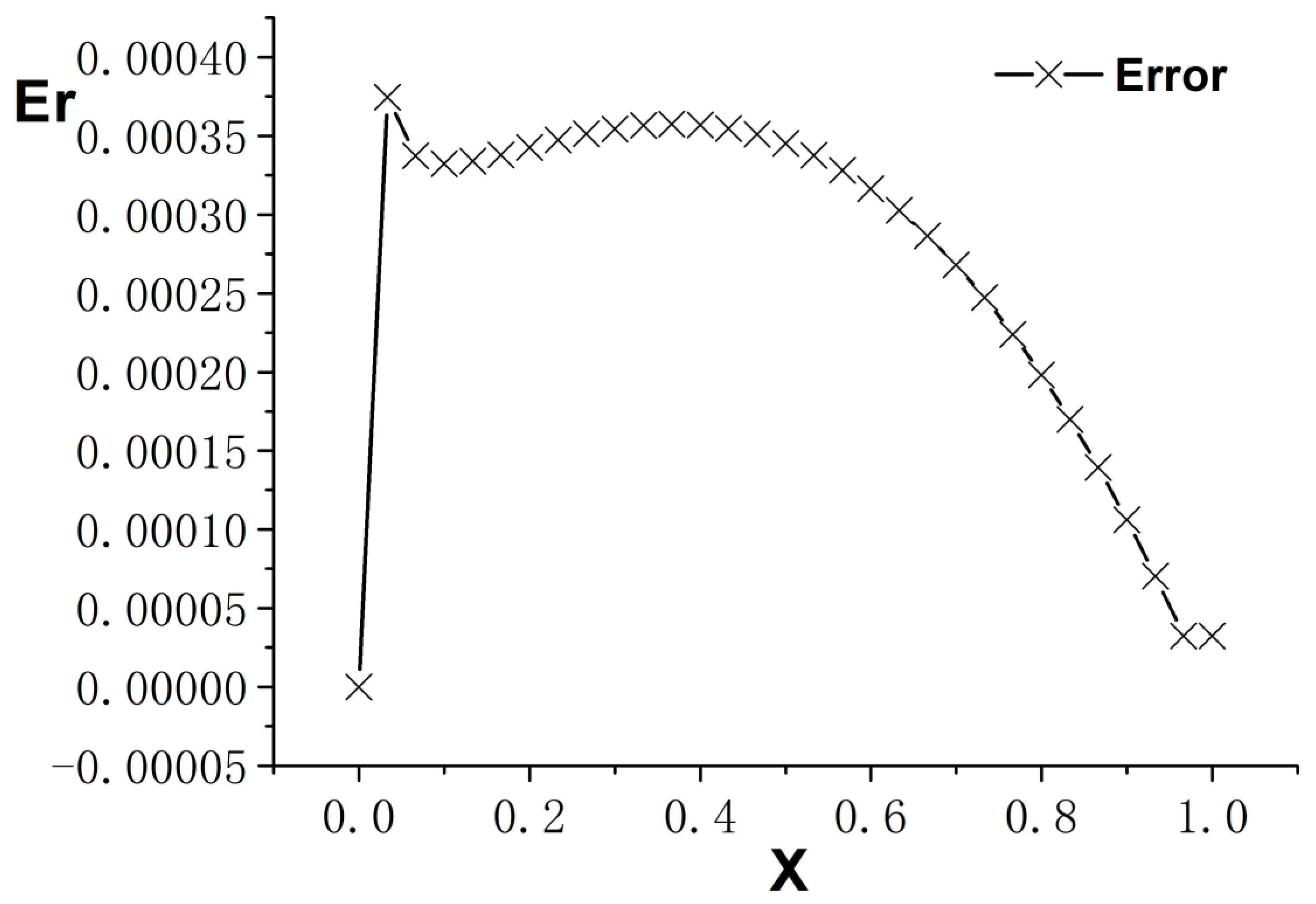
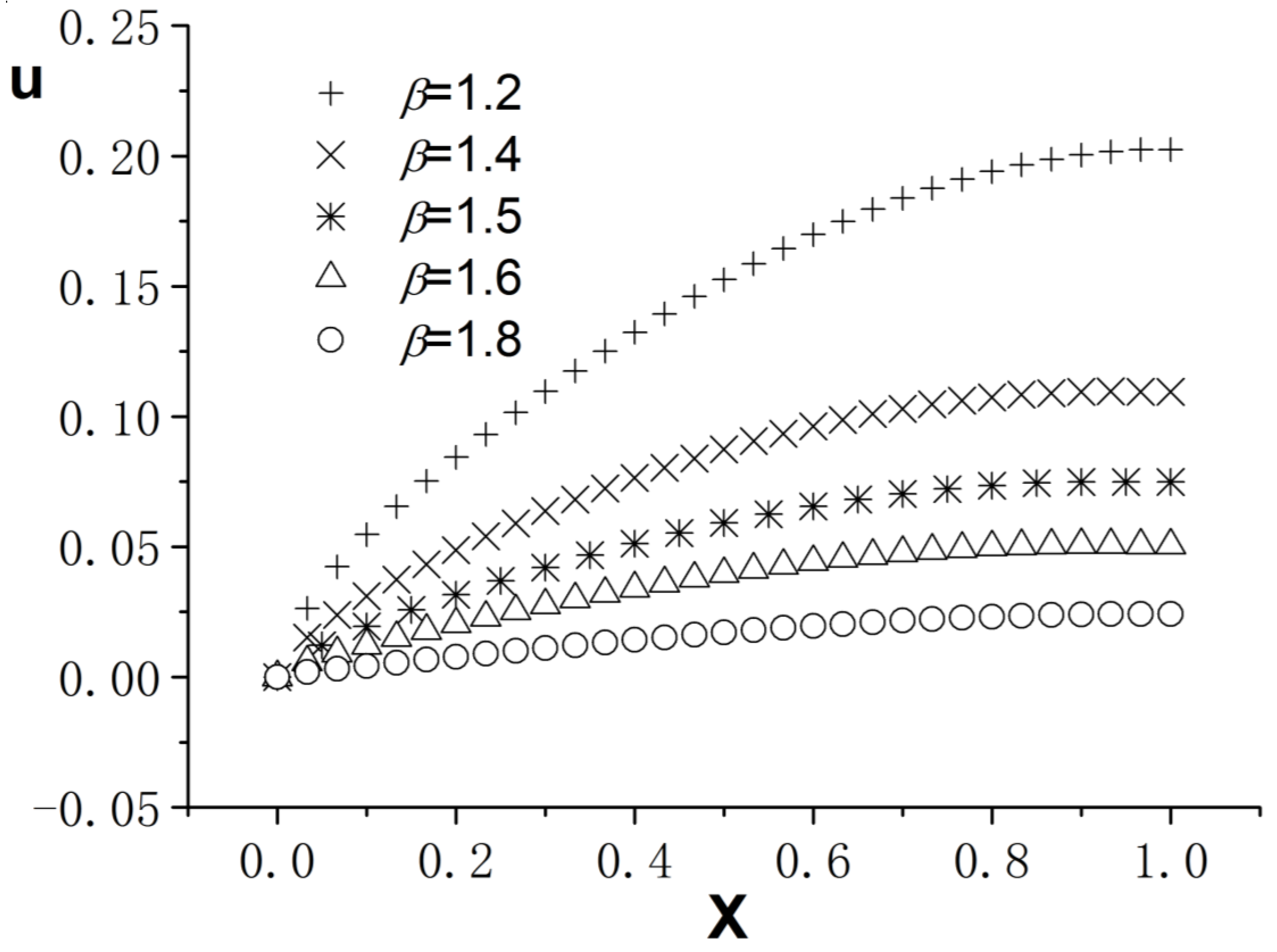
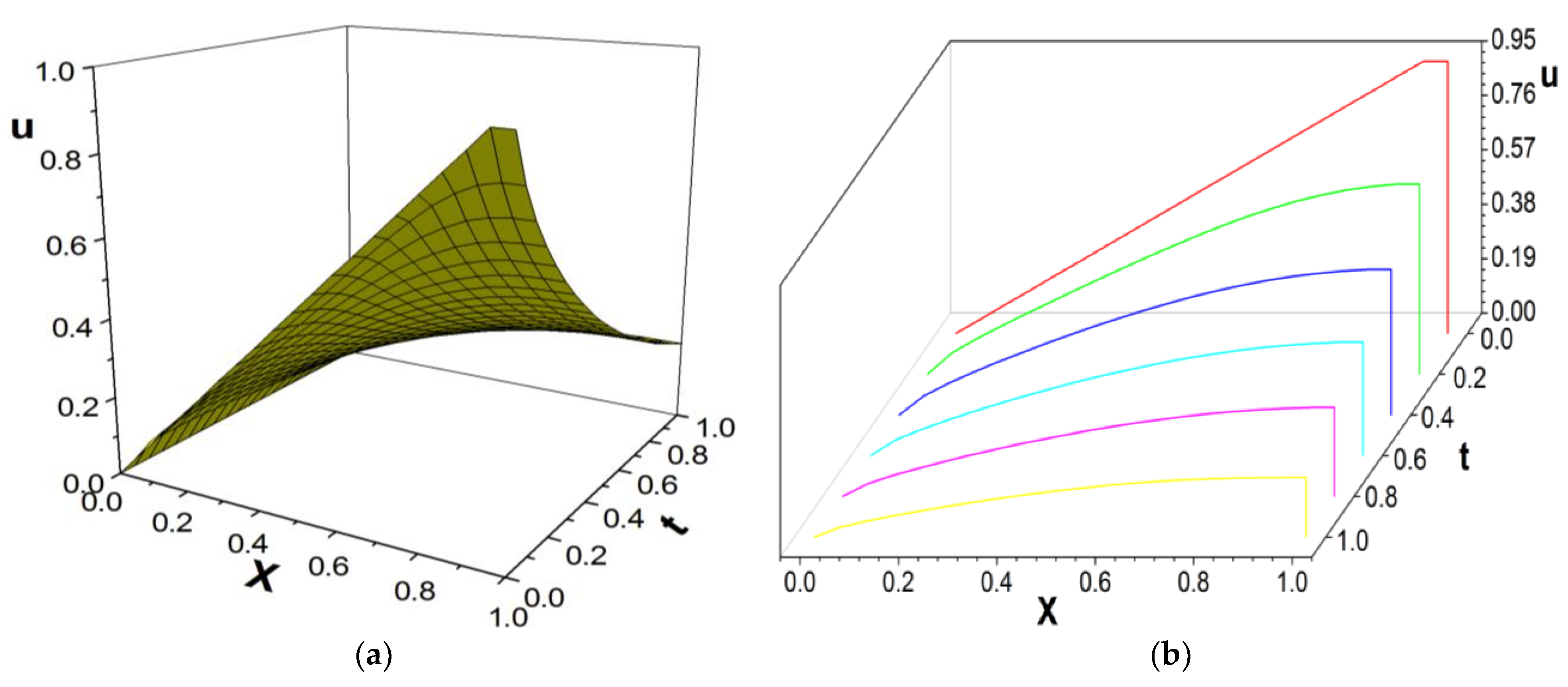
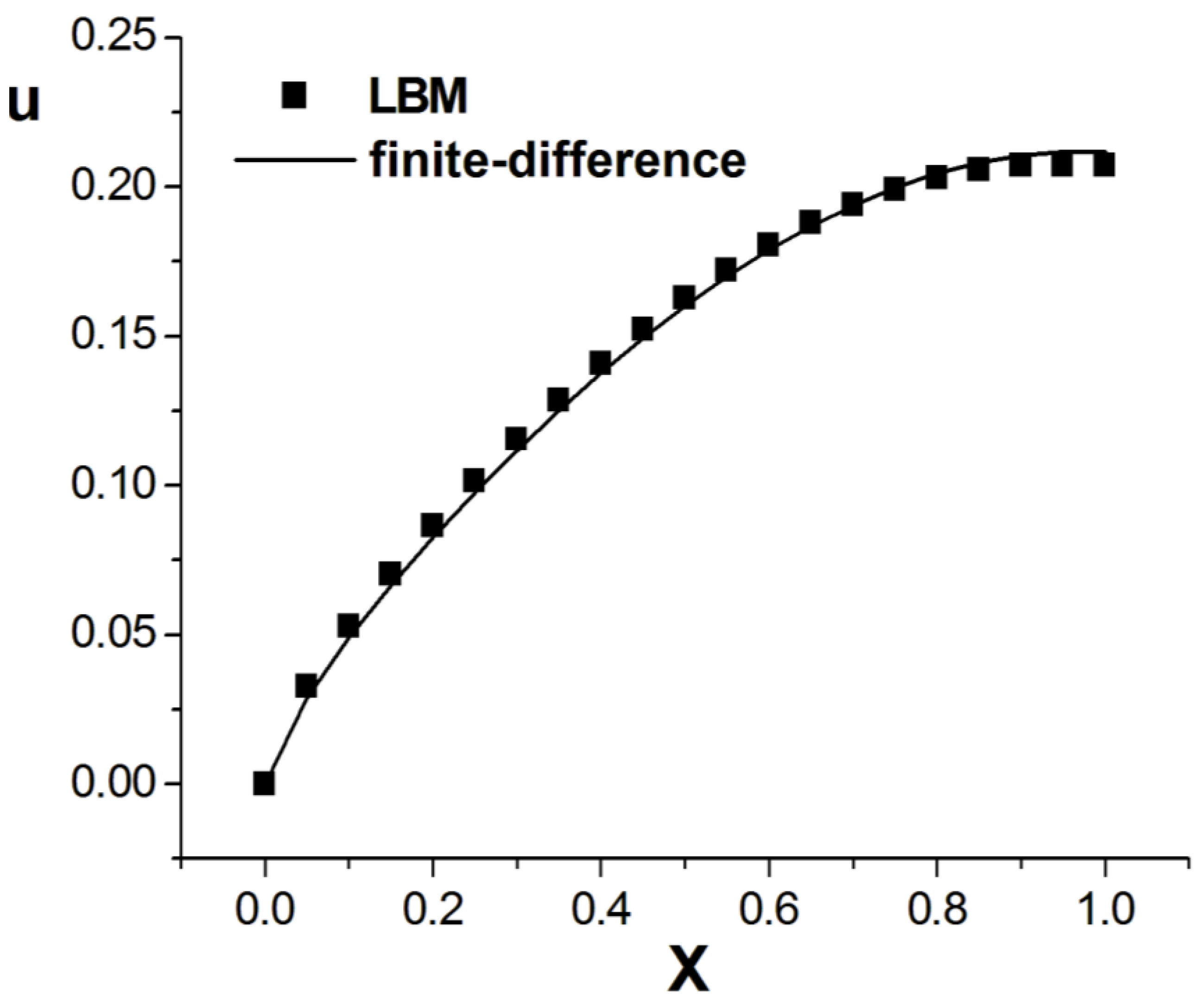
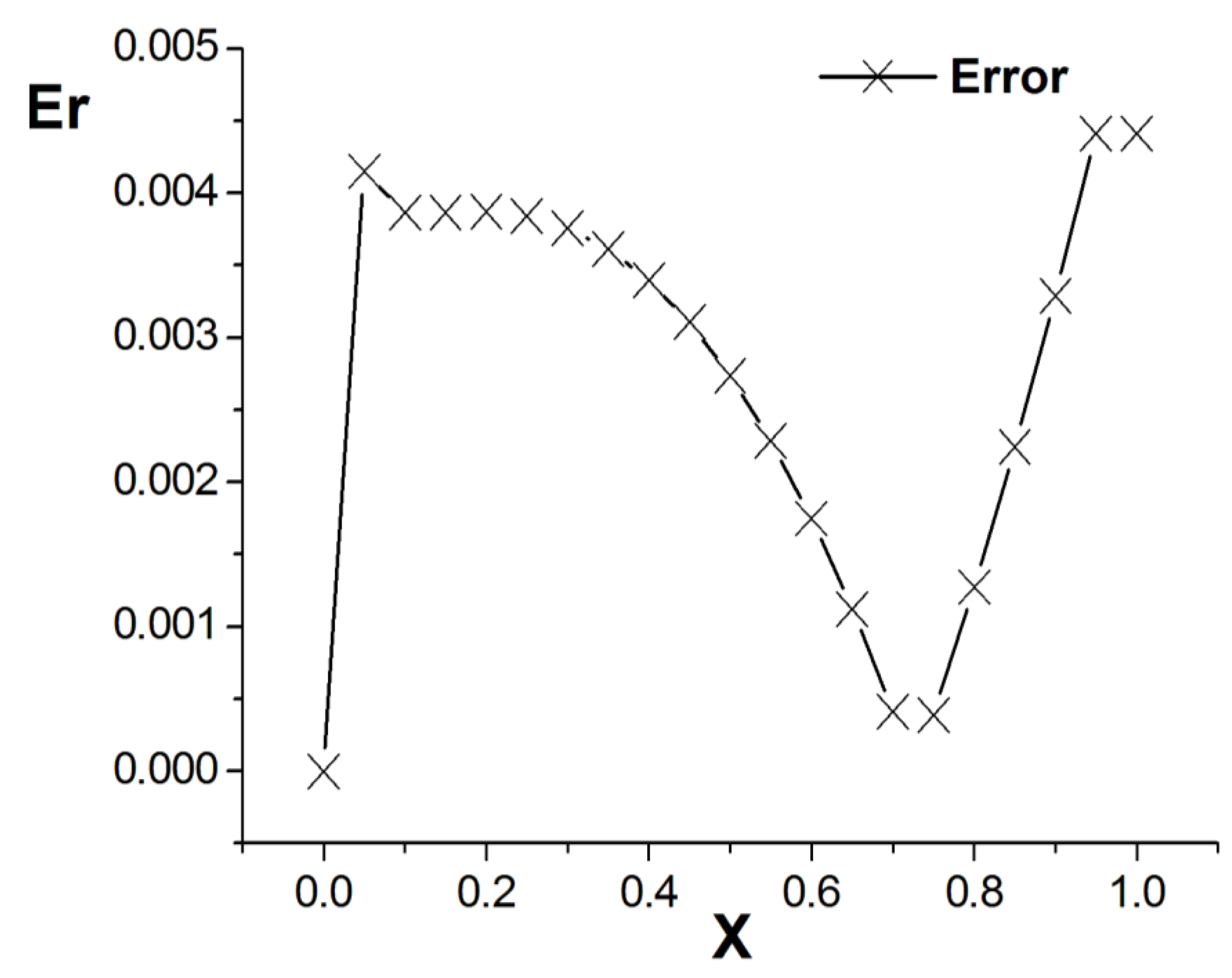
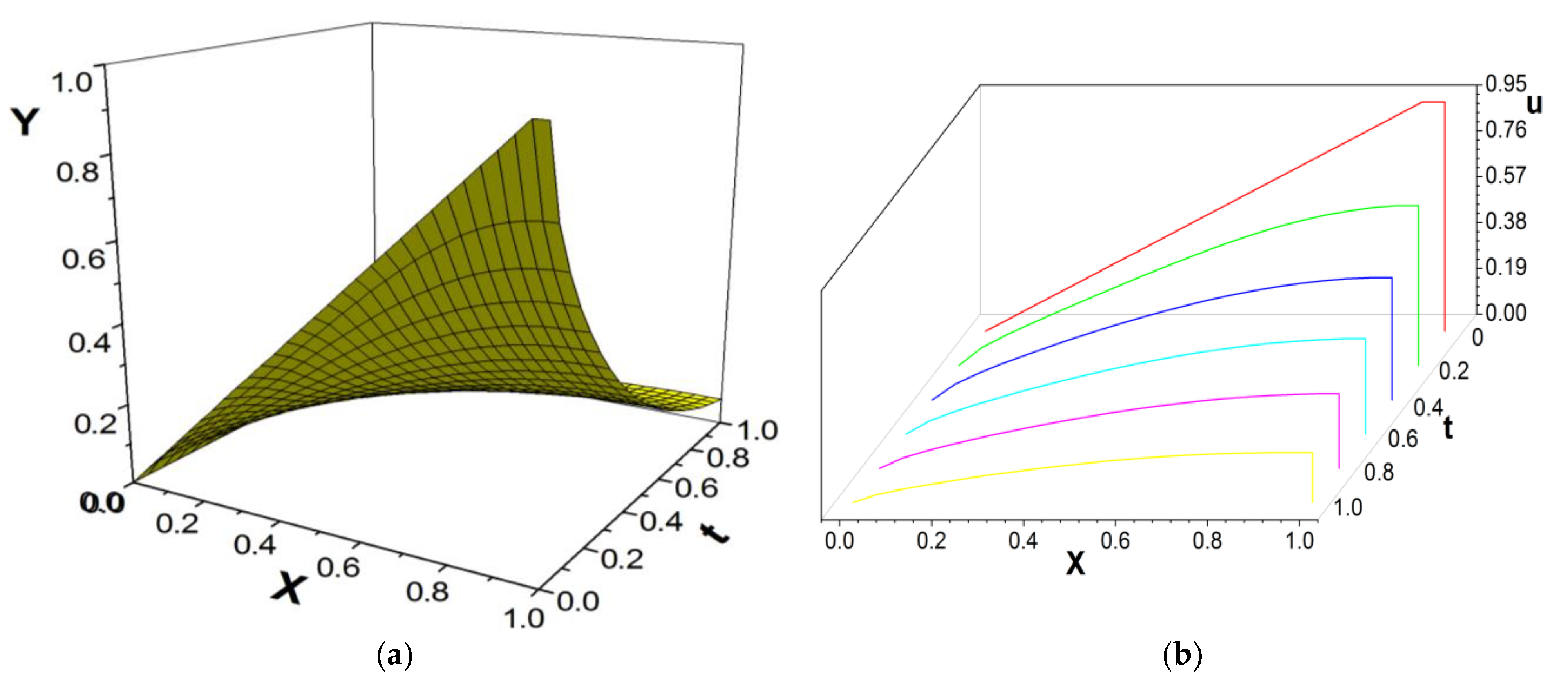

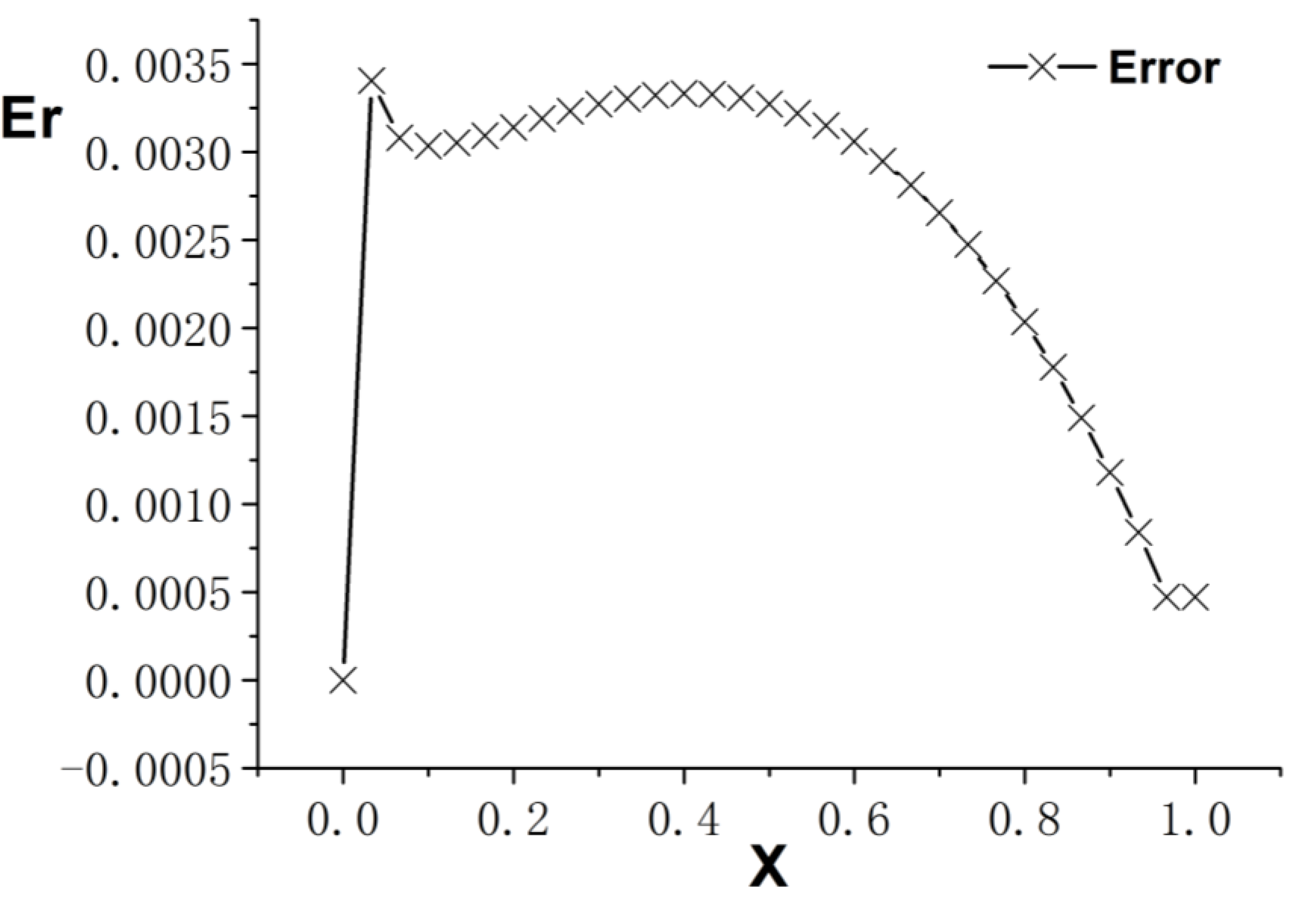
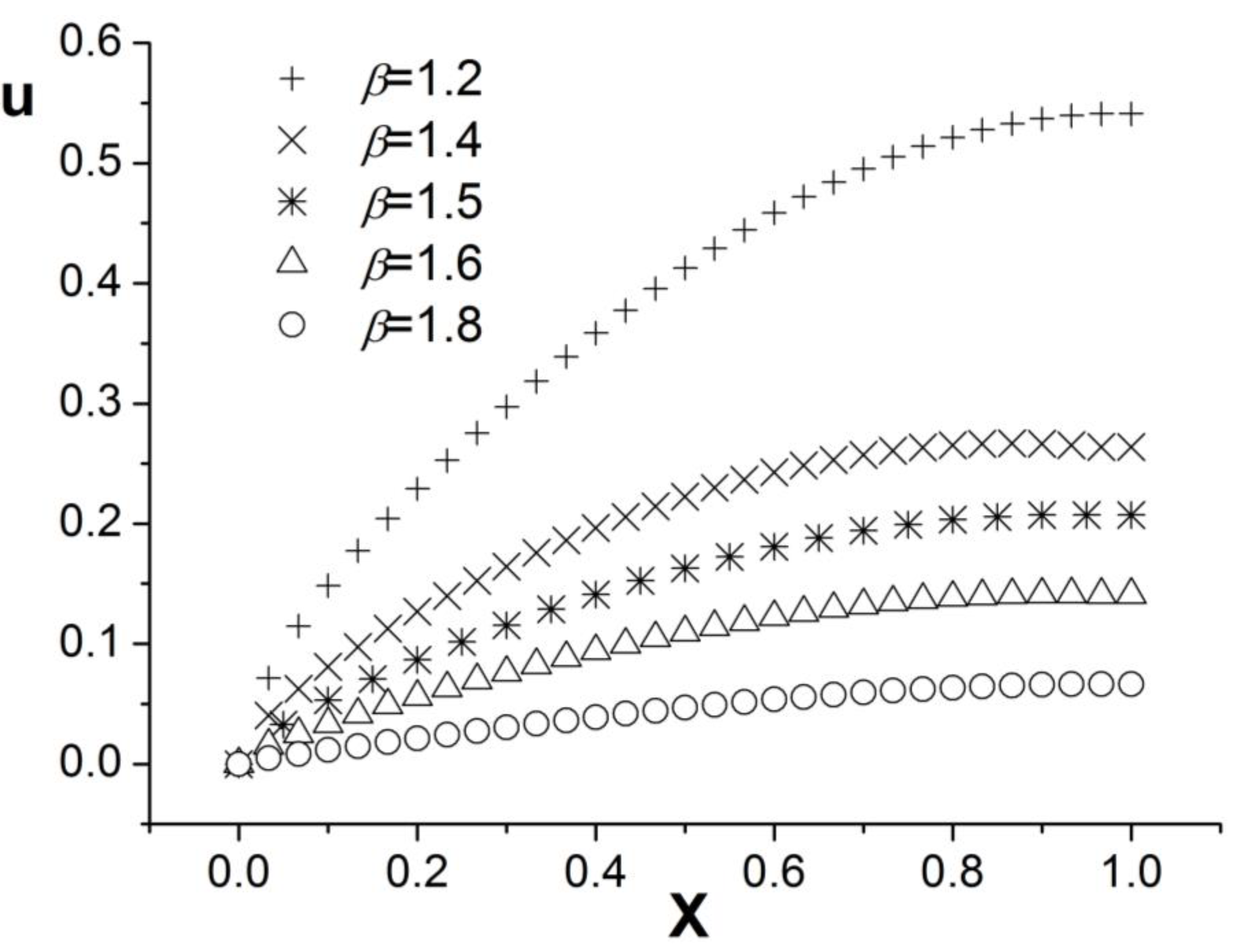
Disclaimer/Publisher’s Note: The statements, opinions and data contained in all publications are solely those of the individual author(s) and contributor(s) and not of MDPI and/or the editor(s). MDPI and/or the editor(s) disclaim responsibility for any injury to people or property resulting from any ideas, methods, instructions or products referred to in the content. |
© 2024 by the authors. Licensee MDPI, Basel, Switzerland. This article is an open access article distributed under the terms and conditions of the Creative Commons Attribution (CC BY) license (https://creativecommons.org/licenses/by/4.0/).
Share and Cite
Bi, X.; Wang, H. Lattice Boltzmann Simulation of Spatial Fractional Convection–Diffusion Equation. Entropy 2024, 26, 768. https://doi.org/10.3390/e26090768
Bi X, Wang H. Lattice Boltzmann Simulation of Spatial Fractional Convection–Diffusion Equation. Entropy. 2024; 26(9):768. https://doi.org/10.3390/e26090768
Chicago/Turabian StyleBi, Xiaohua, and Huimin Wang. 2024. "Lattice Boltzmann Simulation of Spatial Fractional Convection–Diffusion Equation" Entropy 26, no. 9: 768. https://doi.org/10.3390/e26090768






